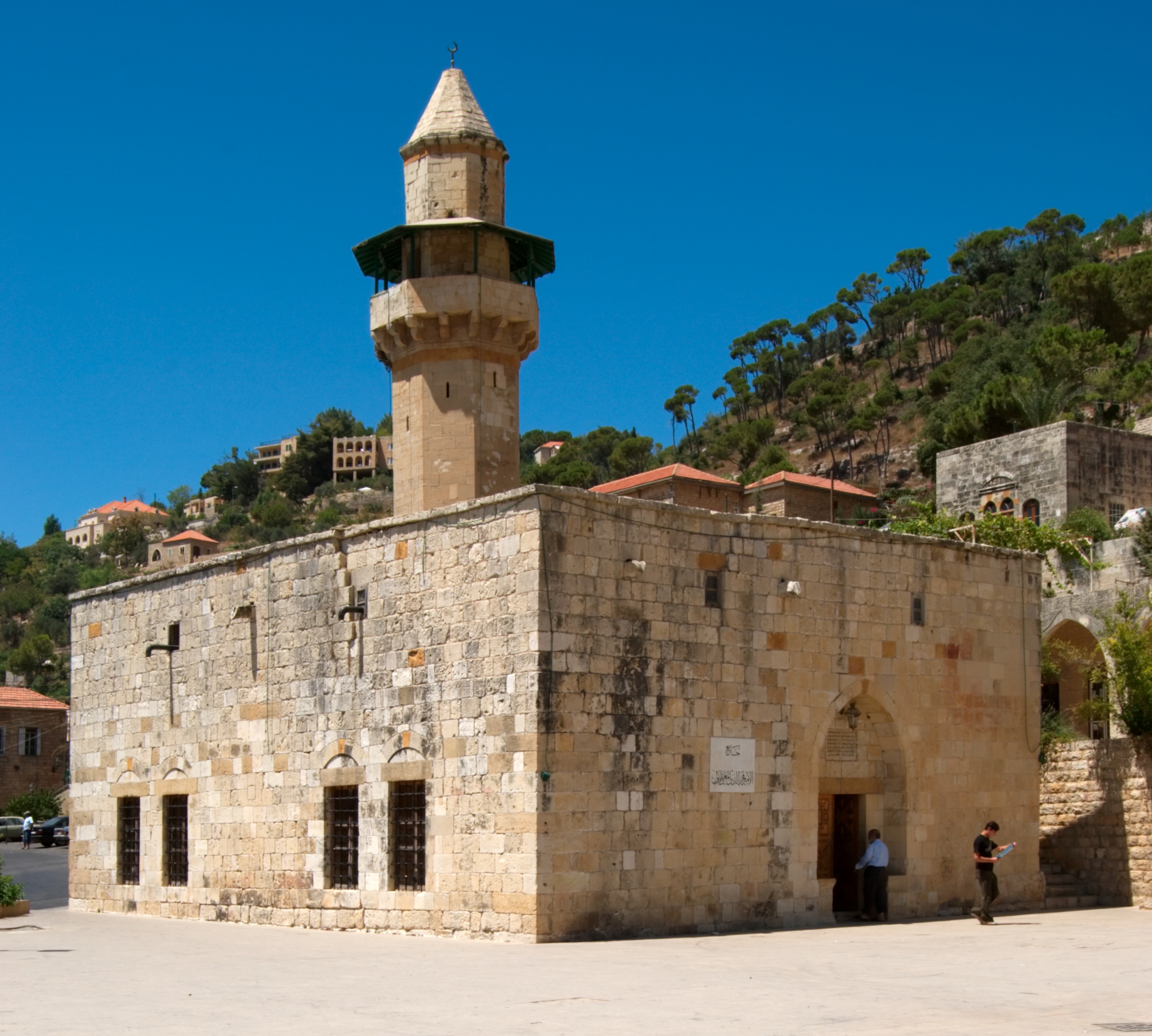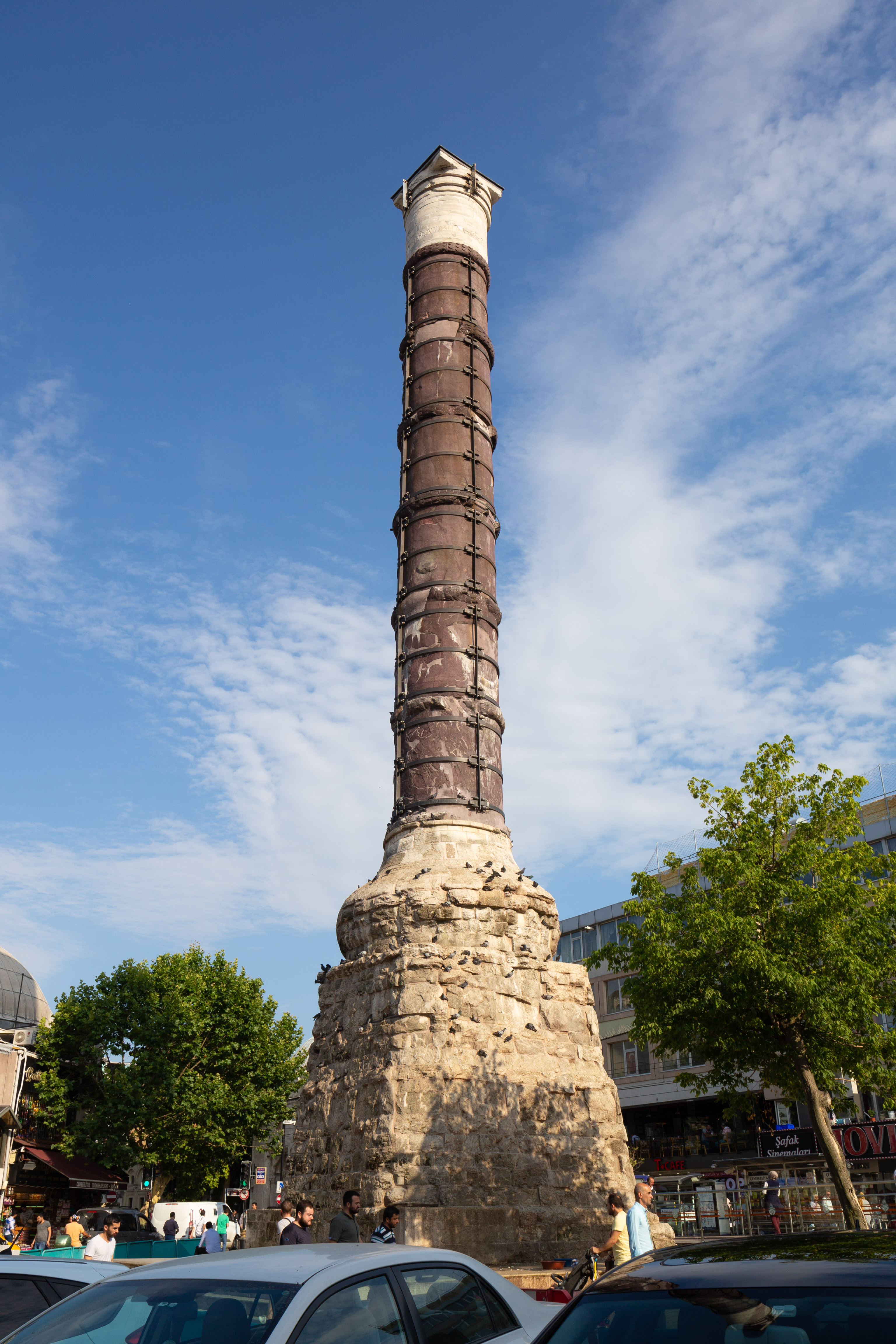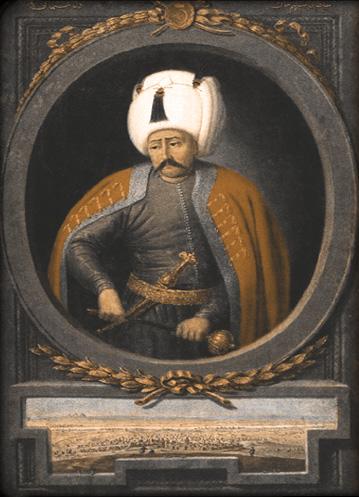|
Ma'n Dynasty
The Ma'n dynasty (, alternatively spelled ''Ma'an''), also known as the Ma'nids; (), were a family of Druze chiefs of Arab stock based in the rugged Chouf District, Chouf area of southern Mount Lebanon who were politically prominent in the 15th–17th centuries. Traditional Lebanese histories date the family's arrival in the Chouf to the 12th century, when they were held to have struggled against the Vassals of the Kingdom of Jerusalem#Lordship of Beirut, Crusader lords of Beirut and Lordship of Sidon, of Sidon alongside their Druze allies, the Buhturids, Tanukh Buhturids. They may have been part of a wider movement by the Muslim rulers of Damascus to settle militarized Arab tribesmen in Mount Lebanon as a buffer against the Crusader strongholds along the Levantine coast. Fakhr al-Din I (), the first member of the family whose historicity is certain, was the "emir of the Chouf", according to contemporary sources and, despite the non-use of mosques by the Druze, founded the Fakhred ... [...More Info...] [...Related Items...] OR: [Wikipedia] [Google] [Baidu] |
Fakhr Al-Din I
Fakhr al-Din Uthman ibn al-Hajj Yunis Ibn Ma'n (), also known as Fakhr al-Din I, was the Druze emir of the Chouf district in southern Mount Lebanon from at least the early 1490s until his death in 1506, during Mamluk Sultanate (Cairo), Mamluk rule. He was the head of the Maan family, Ma'n family, whose emirs are traditionally held to have controlled the Chouf since 1120. He is credited by an inscription for building a mosque in Deir al-Qamar in 1493. Fakhr al-Din was briefly imprisoned by the Mamluk Sultanate, Mamluk authorities in 1505 in relation to his alliance with the Bedouin Bani al-Hansh clan against the Mamluk-appointed, Druze governor of Beirut. Before modern research by Kamal Salibi, most modern historians, including Salibi initially, based their information about Fakhr al-Din on the 19th-century works of local historian Haydar al-Shihabi, who confused him with his grandson, Qurqumaz ibn Yunis, and placed his death in 1544. Family origins The Ma'nids, Ma'n family, to ... [...More Info...] [...Related Items...] OR: [Wikipedia] [Google] [Baidu] |
Damascus
Damascus ( , ; ) is the capital and List of largest cities in the Levant region by population, largest city of Syria. It is the oldest capital in the world and, according to some, the fourth Holiest sites in Islam, holiest city in Islam. Known colloquially in Syria as () and dubbed, poetically, the "City of Jasmine" ( ), Damascus is a major cultural center of the Levant and the Arab world. Situated in southwestern Syria, Damascus is the center of a large metropolitan area. Nestled among the eastern foothills of the Anti-Lebanon mountain range inland from the eastern shore of the Mediterranean on a plateau above sea level, Damascus experiences an arid climate because of the rain shadow effect. The Barada, Barada River flows through Damascus. Damascus is one of the List of oldest continuously inhabited cities, oldest continuously inhabited cities in the world. First settled in the 3rd millennium BC, it was chosen as the capital of the Umayyad Caliphate from 661 to 750. Afte ... [...More Info...] [...Related Items...] OR: [Wikipedia] [Google] [Baidu] |
Safed Sanjak
Safed Sanjak (; ) was a ''sanjak'' (district) of Damascus Eyalet ( Ottoman province of Damascus) in 1517–1660, after which it became part of the Sidon Eyalet (Ottoman province of Sidon). The sanjak was centered in Safed and spanned the Galilee, Jabal Amil and the coastal cities of Acre and Tyre. The city of Safed was made up of Muslim and Jewish townspeople. At the same time the rest of the sanjak was populated by Sunni Muslims, Bedouins, Metouali Twelver Muslims, and Jewish and Druze peasants. Territory and demographics The territory of Safed Sanjak consisted of the area between the Zahrani River in the north to Mount Carmel (near Haifa) in the south, and the area between the Sea of Galilee in the east and the Mediterranean Sea in the west. Besides Safed, it included the port cities of Acre and Tyre and the entire Galilee and Jabal Amil area. The district had a mixed population of peasants and Bedouin. The inhabitants of the Jabal Amil region were predominantly Shia Muslim ... [...More Info...] [...Related Items...] OR: [Wikipedia] [Google] [Baidu] |
Sidon-Beirut Sanjak
Sidon-Beirut Sanjak was a ''sanjak'' (district) of Sidon Eyalet (Province of Sidon) of the Ottoman Empire. Prior to 1660, the Sidon-Beirut Sanjak had been part of Damascus Eyalet, and for brief periods in the 1590s, Tripoli Eyalet. Territory and demographics The Sidon-Beirut Sanjak consisted of the roughly 60-kilometer-strip of territory between the gorge of al-Muamalatayn (just north of Juniyah) to the Zahrani River.Abu Husayn 2004, p. 12. The gorge of al-Muamalatayn marked its northern boundary with Tripoli Eyalet, the Zahrani River marked its southern boundary with Safed Sanjak and the Beqaa Valley ridge marked its eastern boundary with Damascus Eyalet. The Sidon-Beirut Sanjak included the coastal towns of Sidon and Beirut, both of which were the center of their own ''nahiyas'' (subdistricts), and it included the southern Mount Lebanon range. Its interior ''nahiyas'' were, from north to south, Kisrawan and Matn in the Jabal Sannin mountains, Gharb and Jurd in the Jabal al-Kan ... [...More Info...] [...Related Items...] OR: [Wikipedia] [Google] [Baidu] |
Constantinople
Constantinople (#Names of Constantinople, see other names) was a historical city located on the Bosporus that served as the capital of the Roman Empire, Roman, Byzantine Empire, Byzantine, Latin Empire, Latin, and Ottoman Empire, Ottoman empires between its consecration in 330 until 1930, when it was renamed to Istanbul. Initially as New Rome, Constantinople was founded in 324 during the reign of Constantine the Great on the site of the existing settlement of Byzantium, and shortly thereafter in 330 became the capital of the Roman Empire. Following the collapse of the Western Roman Empire in the late 5th century, Constantinople remained the capital of the Eastern Roman Empire (also known as the Byzantine Empire; 330–1204 and 1261–1453), the Latin Empire (1204–1261), and the Ottoman Empire (1453–1922). Following the Turkish War of Independence, the Turkish capital then moved to Ankara. Although the city had been known as Istanbul since 1453, it was officially renamed as Is ... [...More Info...] [...Related Items...] OR: [Wikipedia] [Google] [Baidu] |
Kisrawan
The Kisrawan or Keserwan is a region between Mount Lebanon and the Mediterranean coast, north of the Lebanon, Lebanese capital Beirut and south of the Ibrahim River. It is administered by the eponymous Keserwan District, part of the Keserwan-Jbeil Governorate. In the 12th–13th centuries it was a borderland between the Crusader states along the coast and the Muslim governments in Damascus. Its inhabitants at that time were Twelver Shia Muslims, Alawites, Druze and Maronites, Maronite Christians. While the Kisrawanis acted independent of any outside authority, they often cooperated with the Crusader lords of Tripoli, Lebanon, Tripoli and Byblos. Soon after the Sunni Muslim Mamluk Sultanate, Mamluks conquered the Crusader realms, they launched a series of Kisrawan campaigns (1292–1305), punitive expeditions in 1292–1305 against the mountaineers of the Kisrawan. The assaults caused wide scale destruction and displacement, with Maronites from northern Mount Lebanon gradually migra ... [...More Info...] [...Related Items...] OR: [Wikipedia] [Google] [Baidu] |
1585 Ottoman Expedition Against The Druze
The 1585 Ottoman expedition against the Druze, also called the 1585 Ottoman invasion of the Chouf, was an Ottoman military campaign led by Ibrahim Pasha against the Druze and other chieftains of Mount Lebanon and its environs, then a part of the Sidon-Beirut Sanjak of the province of Damascus Eyalet. It had been traditionally considered the direct consequence of a raid by bandits in Akkar against the tribute caravan of Ibrahim Pasha, then Egypt's outgoing governor, who was on his way to Constantinople. Modern research indicates that the tribute caravan arrived intact and that the expedition was instead the culmination of Ottoman attempts to subjugate the Druze and other tribal groups in Mount Lebanon dating from 1518. In 1523–1524 dozens of Druze villages were burned in the Chouf area and hundreds of Druze were killed or captured by the governor Khurram Pasha, after which a period of peace ensued. Tensions resumed in the 1560s as Druze and non-Druze local dynasties, particula ... [...More Info...] [...Related Items...] OR: [Wikipedia] [Google] [Baidu] |
Selim I
Selim I (; ; 10 October 1470 – 22 September 1520), known as Selim the Grim or Selim the Resolute (), was the List of sultans of the Ottoman Empire, sultan of the Ottoman Empire from 1512 to 1520. Despite lasting only eight years, his reign is notable for the enormous expansion of the Empire, particularly his Ottoman–Mamluk War (1516–1517), conquest between 1516 and 1517 of the entire Mamluk Sultanate of Egypt, which included all of the Levant, Hejaz, Tihamah and Egypt itself. On the eve of his death in 1520, the Ottoman Empire spanned about , having grown by seventy percent during Selim's reign. Selim's conquest of the Middle Eastern heartlands of the Muslim world, and particularly his assumption of the role of guardian of the Hajj, pilgrimage routes to Mecca and Medina, established the Ottoman Empire as the pre-eminent Muslim state. His conquests dramatically shifted the empire's geographical and cultural center of gravity away from the Balkans and toward the Middle East ... [...More Info...] [...Related Items...] OR: [Wikipedia] [Google] [Baidu] |
Janbirdi Al-Ghazali
Janbirdi al-Ghazali (; died 1521) was the first governor of Damascus Province under the Ottoman Empire from February 1519 until his death in February 1521. Career Viceroy of Hama and Governor of Damascus Al-Ghazali was originally the '' na'ib'' or "viceroy" of Hama under the Mamluk Sultanate of Egypt in the early 16th century. When the Ottomans invaded Mamluk Syria, Janbirdi fought alongside the latter at the Battle of Marj Dabiq in 1516, leading the assault on Ottoman sultan Selim I's army in Gaza. Al-Ghazali was wounded during that confrontation. After the Mamluk defeat, he retreated to Cairo with his army where he took part in the defense of the city from incoming Ottoman forces. The Ottomans again defeated the Mamluks and conquered Egypt and Syria.Rogan, p.23. Al-Ghazali then joined the Mamluk governor of Aleppo in defecting to the Ottomans and severed allegiance with Mamluk sultan Qansuh al-Ghawri. Selim I was reportedly impressed by al-Ghazali's loyalty to his superio ... [...More Info...] [...Related Items...] OR: [Wikipedia] [Google] [Baidu] |
Damascus Eyalet
Damascus Eyalet (; ) was an eyalet of the Ottoman Empire. Its reported area in the 19th century was . It became an eyalet after the Ottomans took it from the Mamluks following the 1516–1517 Ottoman–Mamluk War. By Gábor Ágoston, Bruce Alan Masters Janbirdi al-Ghazali, a Mamluk traitor, was made the first beylerbey of Damascus. The Damascus Eyalet was one of the first Ottoman provinces to become a vilayet after an administrative reform in 1865, and by 1867 it had been reformed into the Syria Vilayet. Territorial jurisdiction The Ottoman Empire conquered Syria from the Mamluks following the Battle of Marj Dabiq in August 1516 and the subsequent pledges of allegiance paid to the Ottoman sultan, Selim I, in Damascus by delegations of notables from throughout Syria. The Ottomans established Damascus as the center of an '' eyalet'' (Ottoman province) whose territories consisted of the ''mamlakat'' (Mamluk provinces) of Damascus, Hama, Tripoli, Safad and Karak.Abu-Husayn, p ... [...More Info...] [...Related Items...] OR: [Wikipedia] [Google] [Baidu] |
Syria (region)
Syria, ( or ''Shaam'') also known as Greater Syria or Syria-Palestine, is a historical region located east of the Mediterranean Sea in West Asia, broadly synonymous with the Levant. The region boundaries have changed throughout history. However, in modern times, the term "Syria" alone is used to refer to the Syria, Syrian Arab Republic. The term is originally derived from Assyria, an Ancient Semitic-speaking peoples, ancient Semitic-speaking civilization centered in northern Mesopotamia, modern-day Iraq. During the Hellenistic period, the term Syria was applied to the entire Levant as Coele-Syria. Under Roman Empire, Roman rule, the term was used to refer to the Roman Syria, province of Syria, later divided into Phoenice (Roman province), Syria Phoenicia and Coele-Syria, Coele Syria, and to the province of Syria Palaestina. Under the Byzantine Empire, Byzantines, the provinces of Syria Prima and Syria Secunda emerged out of Coele Syria. After the Muslim conquest of the Levant ... [...More Info...] [...Related Items...] OR: [Wikipedia] [Google] [Baidu] |
Battle Of Marj Dabiq
The Battle of Marj Dābiq (, meaning "the meadow of Dābiq"; ), a decisive military engagement in Middle Eastern history, was fought on 24 August 1516, near the town of Dabiq, 44 km north of Aleppo (modern Syria). The battle was part of the 1516–17 war between the Ottoman Empire and the Mamluk Sultanate, which ended in an Ottoman victory and conquest of much of the Middle East and brought about the destruction of the Mamluk Sultanate. The Ottoman victory in the battle gave Selim's armies control of the entire region of Syria and opened the door to the conquest of Egypt. Battle preparations Sultan Al-Ashraf Qansuh al-Ghawri spent the winter of 1515 and the spring of 1516 preparing an army, which he proposed leading to the disturbed confines of Asia Minor. Before beginning the march, Selim I sent an embassy promising in friendly terms to agree to Mamluk requests to appoint an Egyptian vassal to the Beylik of Dulkadir, a longstanding buffer state between Mamluks and Ot ... [...More Info...] [...Related Items...] OR: [Wikipedia] [Google] [Baidu] |







